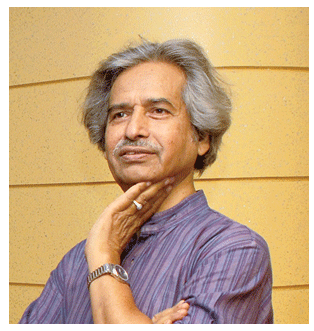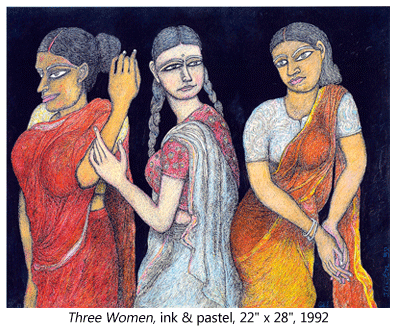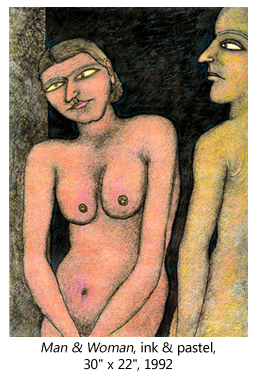- Prelude
- Editorial
- A Conversation with Jagdish Swaminathan
- Seeing is Very Important………
- Tormented Delineations and Violent Deformations
- Bikash Bhattacharjee: Subverting the Seen
- Bridging Western and Indian Modern Art: Francis Newton Souza
- Contesting National and the State: K K Hebbar's Modernist Project
- The Allegory of Return into the Crucial Courtyard
- Knowing Raza
- The Old Story Teller
- Beautiful and Bizarre: Art of Arpita Singh
- Feeling the Presence in Absence! Remembering Prabhakar Barwe
- Waterman's Ideal Fountain Pen
- Peepli Live: the Comic Satire Stripping off the Reality of Contemporary India
- Age of Aristocracy: Georgian Furniture
- Faking It - Our Own Fake Scams
- Scandalous Art and the “Global” Factor
- The Composed and Dignified Styles in Chinese Culture
- Visual Ventures into New Horizons: An Overview of Indian Modern Art Scenario
- The Top, Middle and Bottom Ends
- Top 5 Indian Artists by Sales Volume
- What Happened and What's Forthcoming
- The Month that was
- NESEA : A Colourful Mosaic
- Mumbai Art Sighting
- Art Events Kolkata
- Musings from Chennai
- Art Bengaluru
- Khoj, Kolkata Boat Project
- What a Summit!
- Ganesh Haloi at Art Motif
- The Other Self by Anupam Sud at Art Heritage, New Delhi
- Baul Fakir Utsav at Jadavpur
- Printmaking Workshop
- World's Greatest Never Before Seen Toy and Train Collection
- Previews
- In the News
- Christies: Jewellery Auction at South Kesington, London
ART news & views
Seeing is Very Important………
Volume: 3 Issue No: 13 Month: 2 Year: 2011
Jogen Chowdhury in conversation with Adip Dutta, Kolkata, January, 2011.
 Adip Dutta: You are a practicing artist and have been a pedagoge, how has it been?
Adip Dutta: You are a practicing artist and have been a pedagoge, how has it been?
Jogen Chowdhury: In my case both has complemented each other. In art, if one is not a practitioner he cannot be an effective teacher. Practice enriches and revitalises you. It creates scopes for a mature perspective. I believe, today when I take a critical stance towards any art, intellectually and logically I can afford to do so because I have a long standing experience of a practitioner.
Adip: Could you be a little more elaborate?
Jogen: 1965/66 saw the Salon de Mai in Paris. It was one of the highly rated shows of avant- garde works produced by young artists. I still have a catalogue of the show. The works reflected attitudes of iconoclast. Just not the works but also the projection of the artists in the catalogue was different. I remember one of the artists published a photograph in the catalogue which showed him seated on a commode in the toilet. It was funny but yes, very different at that point of time. Then I was overwhelmed by the works, the event (exhibition). There was an apprehension to question its credibility. But today when I leaf through the catalogue the same works seem to have lost all appeal to me. Therefore I would say it is my practice that has reinforced an understanding of art and the truth in it.

Adip: How do you understand or rather recognize the truth?
Jogen: I feel it is established by the artist. It depends entirely on the artist on how he gives back the excitement regarding any matter. If he gives back the same in hundred times or thousand times, he communicates the truth that he has experienced. The intense emotion builds up the truth bit by bit. When I stand in front of a van Gogh, the excitement is communicated. I feel the vibration.
Adip: Is emotion important to you than the cerebral factor?
Jogen: I think it is vital. I do not undermine the cerebral factor. The cerebral factor, no doubt, brings in a break through, but it runs the risk of producing replicas. In conceptual art the break through is like a spark. It is like a container holding possibilities. But any attempt to duplicate the spark leads to dead replicas. Here the saturation is faster than painting, sculpture or rather what you call conventional practices. The success of conceptual art lies in its initiation of making the narrow by-lane, emerging and deviating from the mainstream.
Adip: It seems your faith in painting remains unrevised.
Jogen: As a matter of fact yes. A good painting surely stimulates me more than say installation art. Seldom I see a spark in it. Joseph Beuys' work in Kassel is one such example. Here I liked the idea, the material like stone and tree etc. You see such similar works by so many artists later. But once you have seen his work it is very difficult to disassociate him from others. This is the problem of conceptual art. This does not happen in painting. In fact it took a long time for Modernism to saturate. I don't sit in judgment. It is a matter of taste.

Adip: What do you think of the future of painting?
Jogen: Painting shall remain and it shall continue to remain relevant. It reflects one of the basic truths of life. The act of painting is almost like a basic instinct. It starts with the scribble of a child and grows to a complex and mature work with layers of interpretation. It is like the mother activity that gives way to numerous forms of activities. These activities shall settle and mature. Time shall prove their credentials. I say this not to mean that I believe in categories. But I am a painter. Painting is my medium. My orientation centres around painting.
Adip: How does your mind works when you conceive a work?
Jogen: Seeing is very important to me. As I come across things, people and situations in everyday life, I often come across magical moments. These are real happenings. But there is an element of surrealism in them. There is strangeness in them. This encounter with strangeness instigates me to record things. Almost in an act of writing I draw them on note books. Dispassionately I look at them later. I revisit them from time to time. Works start to emerge. In course of the execution I again rediscover the magic. It has so happened that the entire definition of the happening tends to change at times when I revisit this records much later. As I evolve the meaning and therefore the focus shifts. It excites me. This involvement not only concerns aesthetic experiences, but also leads to a process that graduates the mere act of painting to art.